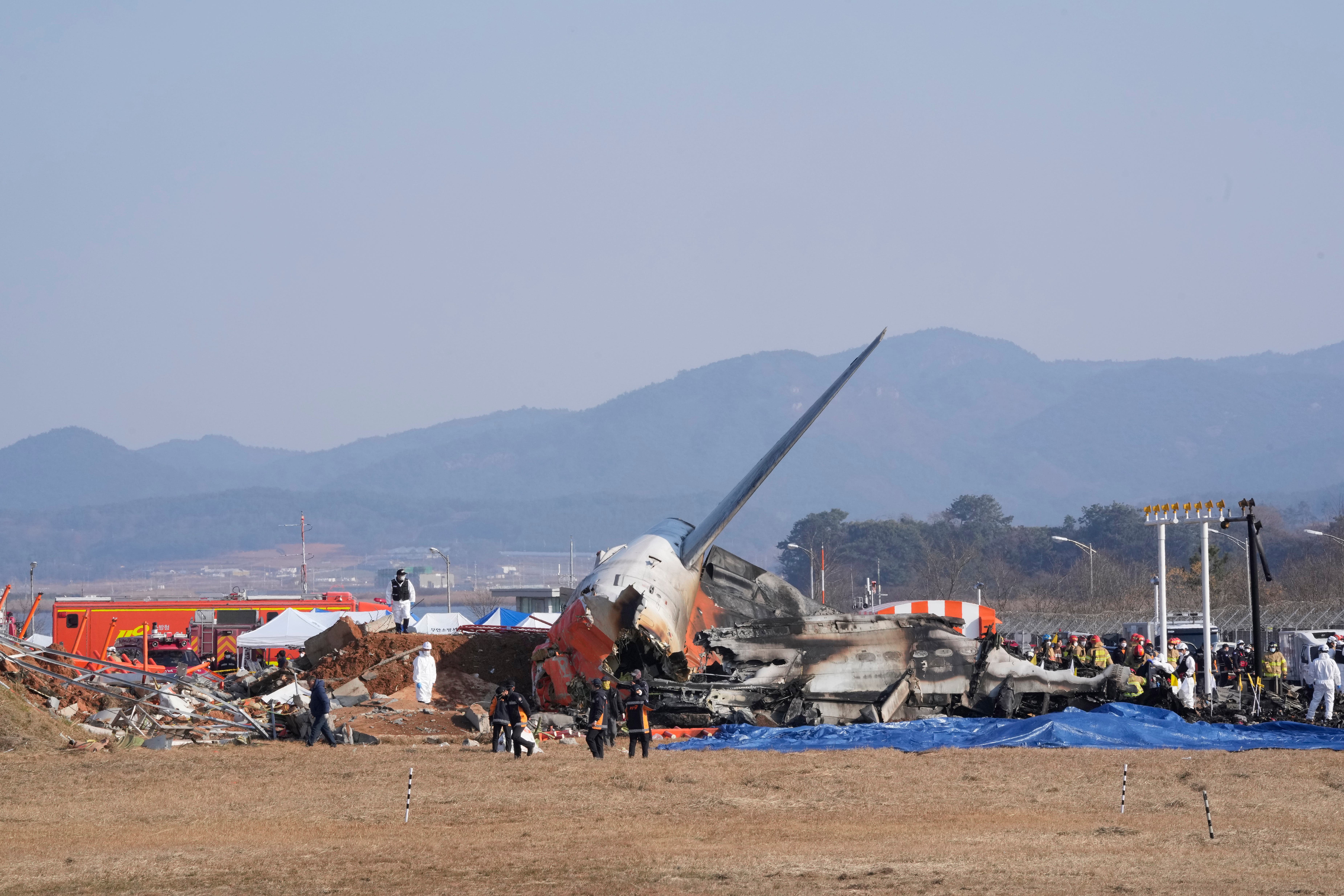Lammy offers condolences after plane crash in South Korea kills 179 people
The death toll is expected to rise as the rest of those on board the plane remain missing about six hours after the incident in Muan.

Your support helps us to tell the story
From reproductive rights to climate change to Big Tech, The Independent is on the ground when the story is developing. Whether it's investigating the financials of Elon Musk's pro-Trump PAC or producing our latest documentary, 'The A Word', which shines a light on the American women fighting for reproductive rights, we know how important it is to parse out the facts from the messaging.
At such a critical moment in US history, we need reporters on the ground. Your donation allows us to keep sending journalists to speak to both sides of the story.
The Independent is trusted by Americans across the entire political spectrum. And unlike many other quality news outlets, we choose not to lock Americans out of our reporting and analysis with paywalls. We believe quality journalism should be available to everyone, paid for by those who can afford it.
Your support makes all the difference.Foreign Secretary David Lammy has paid his “heartfelt condolences” to the people of South Korea and Thailand after a plane crash killed 179.
The Jeju Air passenger plane was carrying 181 people when it skidded off a runway at Muan International Airport in South Korea, slammed into a concrete fence and burst into flames after its front landing gear apparently failed to deploy, officials said.
The country’s national fire agency said 85 women, 84 men and 10 others whose genders were not immediately identifiable died in the fire at the airport in the town of Muan, about 180 miles south of Seoul.
Emergency workers pulled two people, both crew members, to safety and local health officials said they remain conscious.
The plane was a 15-year-old Boeing 737-800 jet that was returning from Bangkok and the crash happened at 9.03am local time, the transport ministry reported.
Mr Lammy posted on X, formerly Twitter, on Sunday morning: “Deeply saddened by news of the plane crash overnight in South Korea.
“My heartfelt condolences go out to the people of South Korea and Thailand, and all those that have lost loved ones.”
Footage of the crash aired by YTN television showed the plane skidding across the airstrip, apparently with its landing gear still closed, and colliding head-on with a concrete wall on the outskirts of the facility.
Other local TV stations aired footage showing thick plumes of black smoke billowing from the plane, which was engulfed in flames.
Lee Jeong-hyeon, chief of the Muan fire station, told a televised briefing that the plane was destroyed, with only the tail assembly remaining recognisable among the wreckage.
He said workers are looking into various possibilities for the cause of the crash, including whether the aircraft was struck by birds.
Marco Chan, a senior lecturer in aviation operations at Buckinghamshire New University, said in his analysis of the crash: “Evidence suggests the aircraft encountered a flock of birds during its approach, leading to suspected bird ingestion into the engines.
“Witnesses reported hearing explosions and seeing flames from the right-hand engine, indicating potential damage. This damage may have caused a hydraulic system failure, which could explain the inability to deploy the landing gear.
“A bird strike warning was issued at 08.57 local time, only six minutes before the crash. The crew declared Mayday at 08.58 and attempted to land on the opposite runway 19.
“This tight timeline likely constrained the crew’s ability to troubleshoot effectively and assess all options, including possible diversion to an alternate airport with a longer runway.
“The inability to deploy the landing gear forced the crew to attempt a belly landing on Muan’s 2,800-metre runway.”
It was initially suggested adverse weather contributed to the incident but a METAR data aviation weather report indicates there was clear visibility, light winds and no significant weather conditions at the time, Mr Chan added.
He said: “The Boeing 737-800 is a reliable and widely-used aircraft, and this crash appears to result from an unfortunate chain of events rather than a systemic design flaw. The findings from the investigation will provide critical lessons for preventing similar tragedies in the future.
“Our thoughts are with the family and friends of all crew and passengers on Jeju Air flight 7C-2216 and the aviation industry must learn lessons from this tragic incident.”
Jeju Air issued a statement expressing its “deep apology” over the crash and said it will do its “utmost to manage the aftermath of the accident”.
It is one of the deadliest disasters in South Korea’s aviation history.
The last time South Korea suffered a large-scale air disaster was in 1997, when a Korean Airline plane crashed in Guam, killing 228 people on board.
In 2013, an Asiana Airlines plane crash-landed in San Francisco, killing three and injuring approximately 200.